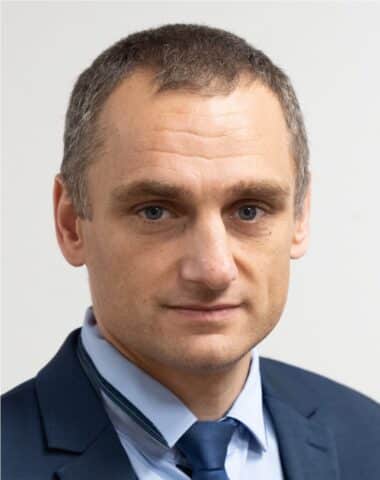AI, a weapon against tax fraud
- Tax fraud is a major issue, accounting for between 4% and 15% of the tax gap in various OECD countries.
- In France, there is a desire to step up the fight against fraud, in particular by using artificial intelligence tools.
- The CISIRH has developed an operational and theoretical framework for comparing different fraud detection algorithms around the world.
- To combat tax fraud effectively, AI and algorithms will not be enough; this fight must be part of a collective and human approach.
Detecting tax fraud is a major challenge, particularly in the current context of high government deficits. Fraud accounts for a significant proportion of the tax gap, estimated at between 4% and 15% of the sums owed in various OECD countries. In France, for example, VAT fraud alone is estimated at €20–25bn1. As a result, the Cour des Comptes has published numerous studies highlighting the importance of stepping up the fight against fraud2. In France, tax fraud is monitored by the DGFiP, which uses several artificial intelligence tools that have produced very promising results.
With this in mind, Christophe Gaie set up a project group with students from CentraleSupélec. Together, they carried out a research study aimed at putting in place an operational framework (methodology, algorithmic approach, computer code, simulation data, etc.) and sharing it with all those involved in the fight against fraud3.
What was the aim of this study?
This project is a continuation of the more theoretical research that has helped to define and articulate the various concepts, issues and directions in the field4. It extends and implements this theoretical aspect and proposes an operational framework that enables algorithms developed by researchers from all over the world to be developed and compared.
As optimisation is not a prohibited action, our work has focused on fraud in the sense of irregularities. We have also concentrated our efforts on detecting fraud perpetrated by individuals, as fraud by legal entities can be dealt with elsewhere.
Where does your database for this study come from?
A tax file can contain a lot of data relating to the individual: family situation, income, assets, etc. Whether in the laboratory or when studying real data, it is not always possible to have all the data available. We therefore created a fictitious database based on a set of pre-selected data: socio-professional category, income, expenditure, amount of property. This database can of course be added to at a later date.
For perfectly valid reasons of confidentiality of personal data, the DGFiP cannot make data available for the detection of tax fraud. As a result, each researcher builds up his or her own database independently, which has proved detrimental for several reasons. For example, each researcher has to build his or her own database, which is time-consuming and requires the researcher to appropriate concepts such as income, assets, etc., in order to detect fraud. But also, researchers’ algorithms are not necessarily comparable with each other, reference databases being a classic approach in the field of digital research (database of references, telecommunication signals or images…).
How does this AI detect fraud?
The AI is based on a tax file model that allows the selection of files to be checked according to configurable criteria. Based on our knowledge of the majority of fraud cases, we have defined a taxpayer’s likelihood of fraud according to different typologies:
- High expenses and/or high assets in relation to income,
- Low expenses and/or assets compared to income,
- High wealth compared to similar people in the same socio-professional category.
The dataset5 was compiled using reference data published by INSEE, taking into account the distribution of socio-professional categories, the distribution of income and wealth, and the distribution of expenditure according to these socio-professional categories. The division into categories is based on a simple percentage of the actual situation. For the other parameters, we have used a Singh-Maddala distribution6.
The fight against fraud cannot be based on simple detection algorithms; it must be integrated into a collective and human dimension.
We have developed different types of algorithms to detect potential fraud cases: either based on neural networks with different sampling, or based on a random forest, i.e. a collection of decision trees used to solve a classification problem.
Have these algorithms been used on real cases?
Although the algorithms have not been implemented on real data, it is quite possible to share these elements with public agents, in particular those of the DGFiP’s SJCF-1D “Control programming and data analysis” office, where one of the students subsequently completed an internship. Any collaboration or feedback with a public entity would be an opportunity to be seized.
What is the level of accuracy?
It is important to remember that there is a trade-off in detection between accuracy (i.e. the rate of correct predictions among positive responses) and sensitivity (i.e. the rate of positive individuals detected by the model). The results of an algorithm are therefore expressed in terms of a metric that considers the trade-off between precision and sensitivity (AUPRC: “area under the precision-recall curve”).
The proposed algorithms achieve an AUPRC of up to 0.851 for the sensitivity-optimised random forest. This is an excellent result, which points to particularly useful prospects for detecting potential fraud using artificial intelligence.
Is AI enough on its own?
No. The fight against fraud cannot be based on simple detection algorithms; it must be integrated into a collective and human approach. And that’s because the fight against fraud is not just a technological issue. The detection of potential fraud must be corroborated by the action of a tax auditor, as part of a procedure that respects the rights of the taxpayer. This approach guarantees that the situation will be examined by people who will take account of tax case law, under the supervision of a judge.
It is therefore important to understand that the analysis of a case is entrusted to auditors on the basis of criteria such as skills, workload, professional interest, coverage of the tax system and so on. We have developed algorithms that aim to suggest a distribution of cases to the head of a team of auditors, who then has the final say. He or she may also take subjective criteria into account, such as the need to train new agents, even if the allocation of files would then no longer be ideal.
Finally, it is worth remembering that a fraud detection application must be integrated into an information system that ensures that all the administration’s functions are carried out. Therefore, in addition to research work, operational implementation requires planning for both interconnections with other applications and the maintainability of the fraud detection application. Similarly, the ability to integrate new, more powerful algorithms should also be detailed.
James Bowers
Legal disclaimer: The contents of this article are the sole responsibility of the author and are not intended for any purpose other than academic information and research.
Acknowledgements: The author would like to thank the CentraleSupélec students who worked on the project and all the co-authors with whom he carried out his research to contribute to academic research into fraud.

























